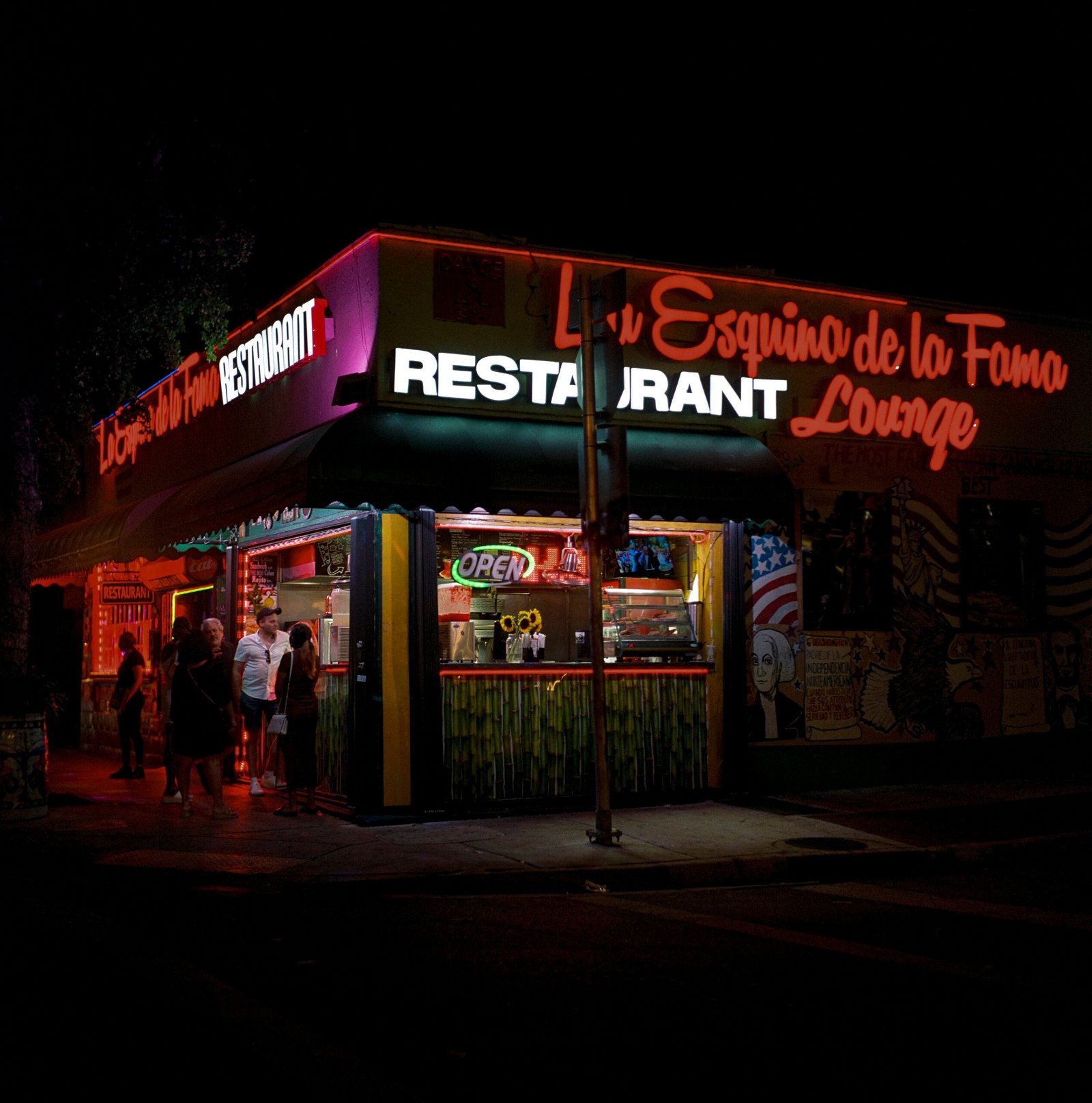The below is an excerpt from Daniela Perez Miron’s new book Ventanitas – A Window into Miami’s Coffee Culture.
If you live in Miami, you don’t get your coffee indoors. You get it through a window. A little window. A ventanita.
For those who have never visited one, a ventanita is a window at the front or side of a business, offering convenient and inexpensive access to favorite menu items. Walk up to one, and you’ll be greeted with the delicious smell of freshly ground coffee and a warm hello. Most commonly, ventanitas sell Cuban sandwiches, pastries, and what residents will happily tell you is the best-tasting coffee in the world, but some sell fried chicken or even ice cream. They’re so common in Miami that in some places they line the streets. With their awnings and outdoor countertops, you’ll know one when you see one, but you’ll also feel it. A ventanita is more than just a structure: it’s an atmosphere, a gathering place, and a way of running a business that favors human connection over optimization.

Ventanitas are the lifeblood of Miami, keeping the city fueled with strong, sweet coffee, and they’re also a window into its culture: a proud mix of United States and Latin America that is like nowhere else in the world.
On April 9, 2020, in response to the COVID-19 pandemic, Hialeah Mayor Carlos Hernández signed an emergency order restricting “walk-up service windows,” another way of saying “ventanita,” at all food establishments in the city.
I grew up in Doral, in a Guatemalan family obsessed with coffee, and as I read the order on Hialeah’s pink letterhead, I was struck by the city’s need to specifically regulate interactions at ventanitas. Not long after I started graduate school in London, and, finding myself missing both my city and its coffee culture,I mentioned the emergency order to a few of my British classmates. “Sorry,” they said. “What’s a ventanita?” I had made a classic mistake so many Miamians do—assuming anywhere else is like our home.

But that misunderstanding also helped me realize how unique ventanitas are as a civic infrastructure. While I was home during breaks from school, I started documenting Miami’s coffee windows, using a film camera I purchased on eBay to capture their colorful facades, bright awnings, and Spanglish menus. This obsession turned into my final project for graduate school. I wanted to tell the story of not only the windows themselves, but the people who gather around them. I started conversations with the owners, workers, and customers, and I developed a new level of respect for ventanita culture. Each of these Miamians has a unique and different life story, but all of them have one thing in common: a love for their own favorite ventanita.


